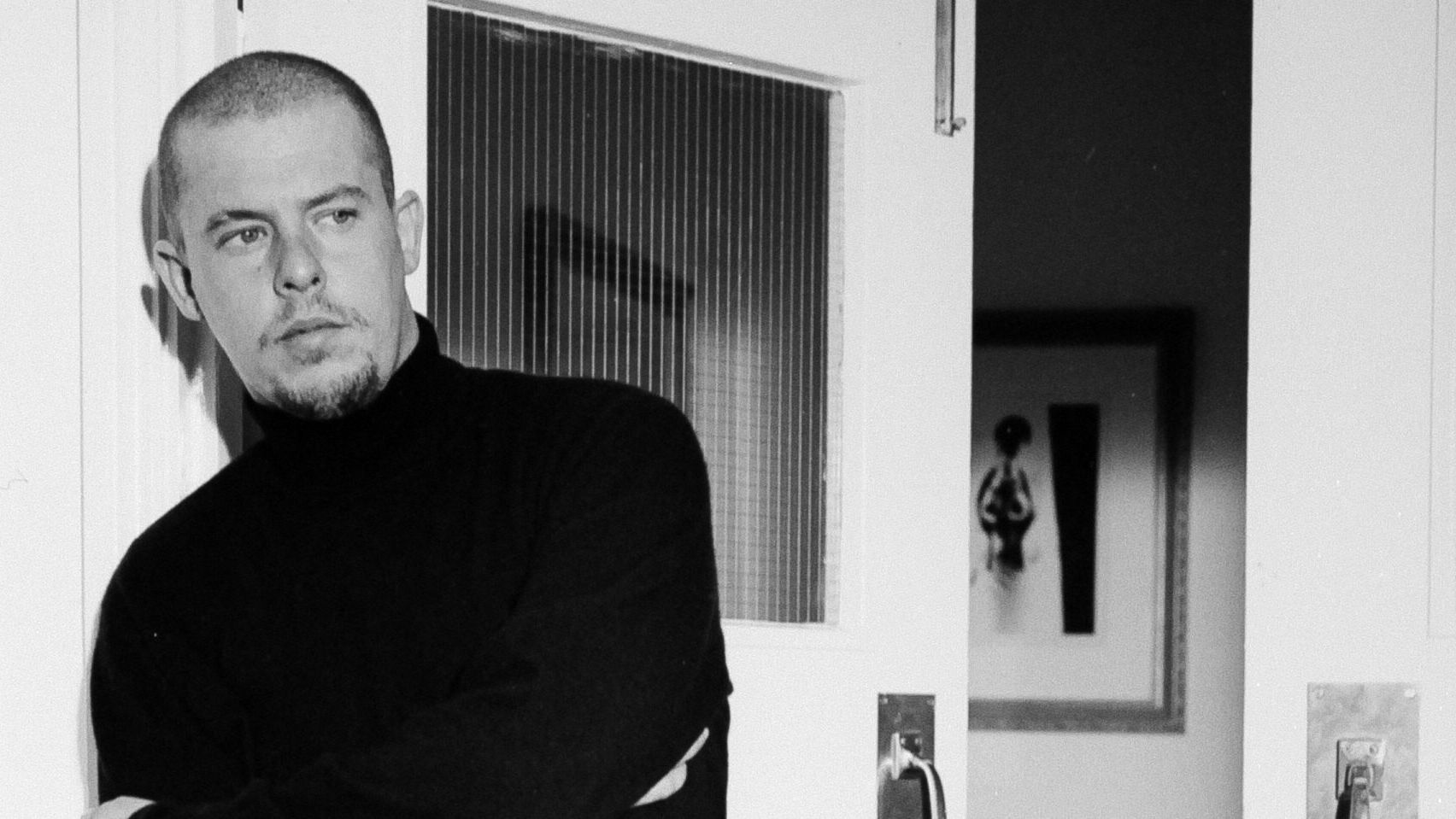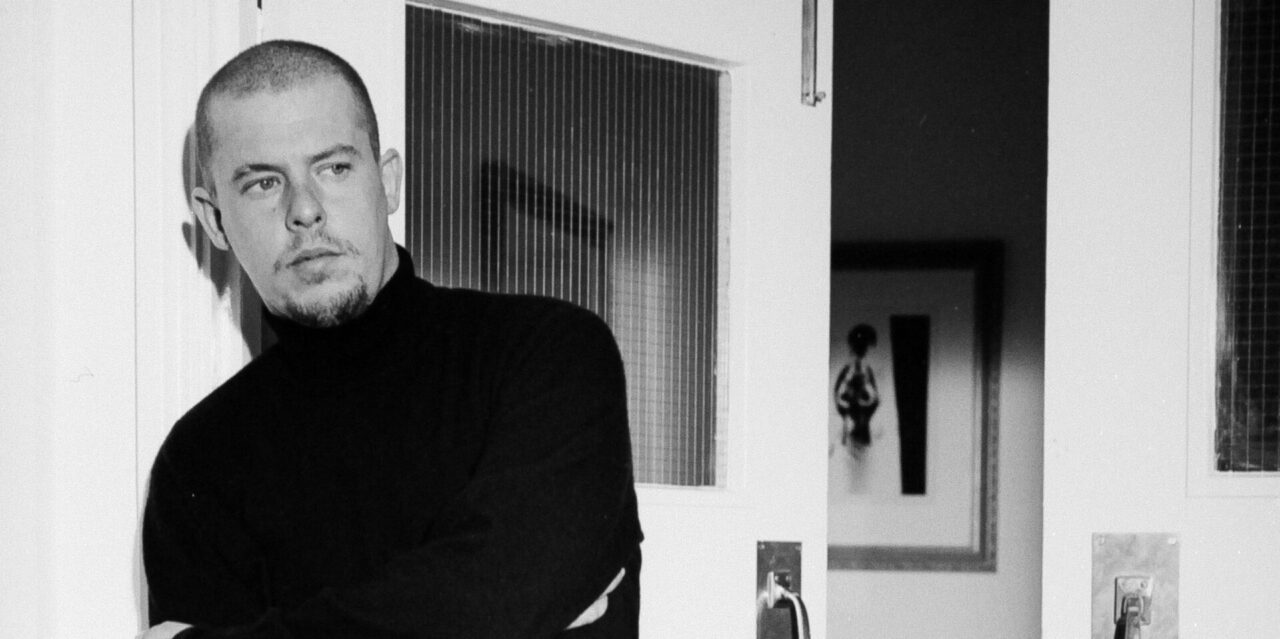McQueen follows the classic narrative of a creative, misunderstood genius whose childhood traumas continue to plague him as an adult and ultimately fuel his runway masterpieces.
Filmmakers Ian Bonhote and Peter Ettedgui masterfully created a portrait in McQueen that captured Alexander McQueen’s goal with his runway shows- to provoke an emotion from those who watched, whether it be disgust, awe, or shock. As McQueen states himself about the effect of his shows, “…you leave with emotion. If you don’t, I haven’t done my job.” While showing the strange genius that was the late designer, we are also shown his deeply tragic personal life that led to his Icarus complex, and brought about his unparalleled success and ultimately his tragic downfall from flying too close to the sun. Our filmmakers trace the rags-to-riches story of an outcasted high school dropout from a working-class family in East London and show behind the curtain of the creepy runway theater that proved he was an artist in the full sense of the word. His relentless work ethic, natural talent for tailoring, love of collaboration, and a punk attitude towards the fashion industry rules made him stand out. Bonhote and Ettedgui captured both aspects of McQueen’s unique personality perfectly.
The movie is broken into five chapters, or as McQueen calls them in one of his home videos “tapes”, and uses the skull motif that is the iconic symbol of McQueen’s design house today. In each chapter or tape, the skull is deconstructed and reshaped to match the runway show that marks that chapter- oozing blood for “Jack the Ripper Stalks His Victims” and Scottish tartan flowing from the skull and encapsulating it for “The Highland Rape.” These skulls are the perfect glue to connect all these tapes together. They show the psychological trauma that McQueen was working through in his fashion, shows and personal life.
One of the strongest and most influential friendships McQueen had throughout his career was with fashion influencer Isabella Blow, who purchased his graduation collection from St. Martin’s School of Art. She was supportive of his vision and unique eye and convinced him to go with Alexander over Lee because it sounded more high class. They were inseparable in the beginning because of their similar styles and their constant encouragement in one another to embrace and share their differences with the world.
Bobby Hillson, founder of the MA in fashion at St. Martin’s, describes McQueen as uneducated in the basics of fashion and clothes, but was convinced by his passion for the field and invited him to take her course. She recalls that he was a nightmare student because he claimed to know more than the tutors he worked with to fill the gaps in his fashion knowledge, but his gift was present and highlighted in his first show in 1992, “Jack the Ripper Stalks His Victims.” It was a visually violent recreation of the murders from that time and was a precursor to the element of violence that would continue to be threaded through his work.
His family was another strong and extremely important aspect of his life. His mother Joyce was his primary source of encouragement as they talked frequently and she attended his shows. His sister Janet and her son, Gary, who worked for McQueen, were abused by her husband as was McQueen himself. He witnessed Janet’s husband strangling her and was sexually abused himself as a child by this man. It is evident that this profoundly damaging incident would continue to affect him into his adulthood and until the end of this life. The wealth, drugs, and physical and mental demands that McQueen put on himself and the ones that worked closely with him created an isolated life for him that continued to deepen his depression.
McQueen is a haunting story of extraordinary talent, relentless creativity and unavoidable personal scars that is crafted in the perfect way to show tribute and honor to its subject.
The documentary does an excellent job of using the stunning footage from McQueen’s shows, which were documented expertly as the shows began before the social media outburst began. We see “The Highland Rape” where McQueen drew from his Scottish heritage and had the models walk with ripped clothing to show the reality of the victims of this assault. It was his way of showing strong women in armor and could have been how he viewed Janet after the trauma he witnessed. “It’s a Jungle Out There” was his fuck you to Givenchy as he went back to the stories and fashion he wanted to create. McQueen became unhappy during his time at Givenchy as his vision and style weren’t being fully realized, as Givenchy has a very distinct visual style. His models walked in latex with animal-like hair and makeup. Each one of McQueen’s shows was a fascinating and thrilling spectacle because of their high level of theatricality and concepts that had never been tackled before.
When McQueen worked as the Creative Director of Givenchy in 1997, the film suggests that this is when he began to lose that punk rock individuality and became the McQueen name. He was torn between these two personas as he was the one who insisted on eating from the basement cafeteria with the workers, but held resentment for John Galliano at Dior as he was given a grand budget to work with and was viewed as the apple of the fashion world’s eye. Later, McQueen undergoes liposuction to transform his body and look like the fashion designer he thinks he needs to be. McQueen even distances himself from Isabella Blow as he continues to achieve more and more notoriety. She felt betrayed and abandoned by her great friend and while they still loved each other deeply, their relationship never truly toppled this obstacle. This foreshadows the deterioration of his working and personal relationships as with the continued success McQueen achieved, the more paranoid, isolated, and depressed he became.
The final chapter is “Plato’s Atlantis,” the 2009 show where McQueen birthed the now famous and incredibly recognizable armadillo show and had cameras on tracks following the models as they walked. This is reminiscent of his previous show where model Shalom Harlow stood on a turntable with a white belted dress as two robots seem to be scrutinizing her look and then spray her white dress with black spray paint. We also see “La Dame Bleue” in this chapter which was McQueen’s tribute to his beloved friend Blow, as she had committed suicide the previous year. We see him struggle with the loss of someone he loved and who supported him before he was the McQueen we know today. Bonhote and Ettedgui show how her death and then the loss of McQueen’s mother in 2010, another strong female in his life who he loved unconditionally and supported him every step of the way, lead to his suicide a week after her death, by hanging. This film is expertly crafted as it mirrors McQueen’s runway shows by striking the audience with dazzling visuals.
McQueen is a haunting story of extraordinary talent, relentless creativity and unavoidable personal scars that is crafted in the perfect way to show tribute and honor to its subject. This superb documentary delivers jaw-dropping, visually stunning pieces of art while taking its audience on an emotionally tragic journey that creates a fully dimensional study of the legend that was Lee Alexander McQueen.
111 minutes. ‘McQueen’ is rated R. Opens Friday, July 20th at The Landmark and Arclight Hollywood.
Ashley DeFrancesco
Ashley has been fascinated with films since a young age. She would reenact her favorite scenes for her family, friends, and adoring fans (stuffed animals).


